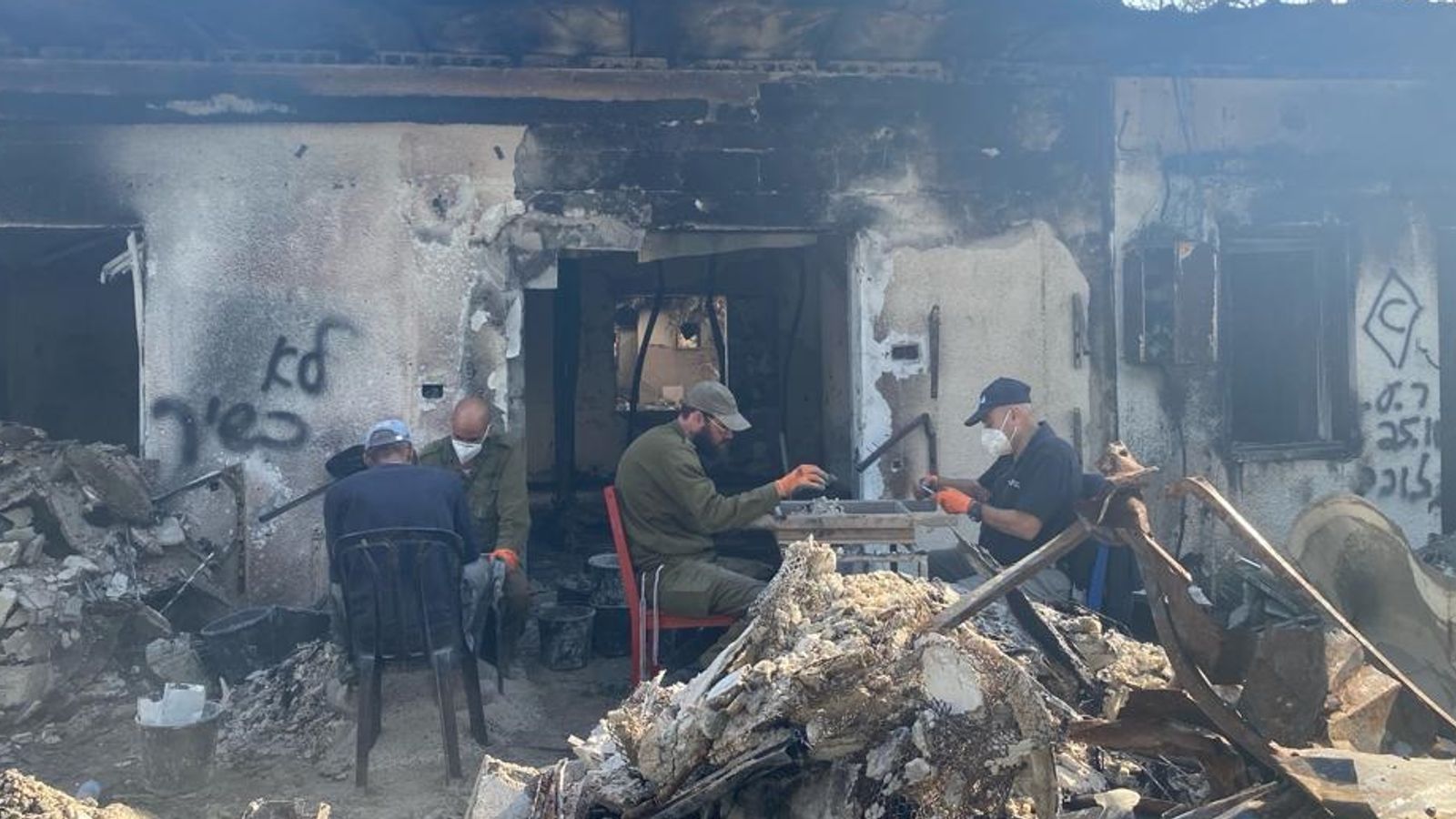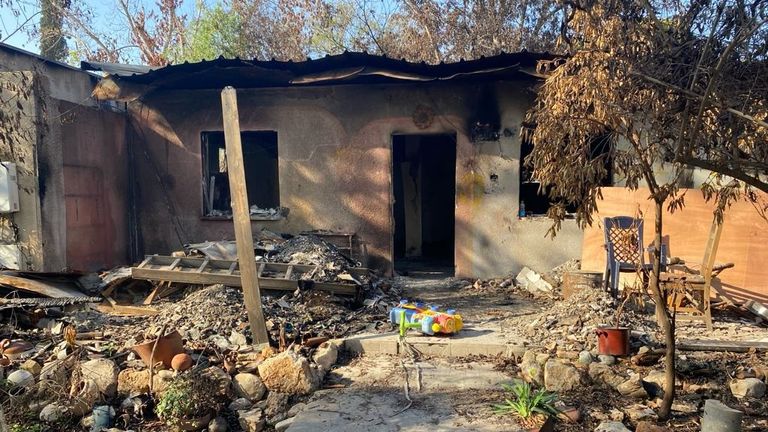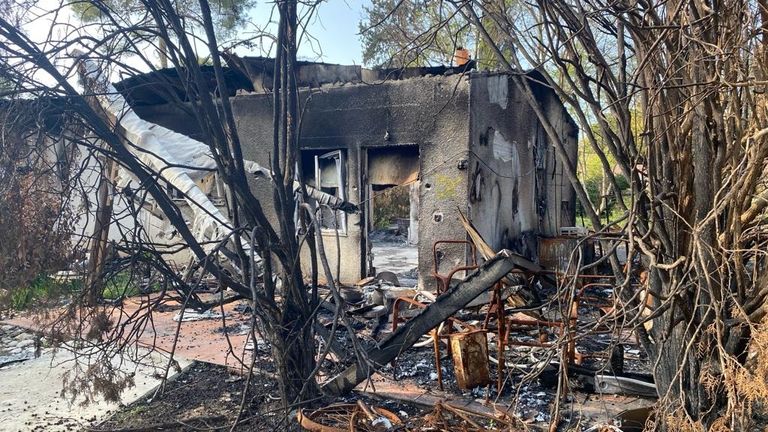In Nir Oz, a kibbutz on the Gaza border, they are still sifting through the ashes to find body parts of people killed in the Hamas attack on 7 October.
We watched Israeli soldiers in their green military fatigues sitting opposite each other on plastic chairs, eyes down, expressionless faces and hands methodically searching for evidence.
They are looking for teeth, bits of bone or flesh.
Israel-Gaza latest: Hamas leader’s house ‘encircled by Israeli troops’
Buckets of debris, lined up beside the tables, are poured onto wooden framed sieves.
Larger, irrelevant items are immediately discarded to one side and then the soldiers shake the sieves like speculators searching for gold. Except they are looking for proof of death.
Anything they find that might be proof of a life lost goes into small white bags beside them and then sent off for DNA tests.
It’s slow work, grim work, but important work.
I asked one soldier how much they’d found. “A lot” was the short reply.
We watched the team working outside the wreck of a burned house in which every inhabitant had been killed in the attacks.
Another soldier beckoned me to a broken window and then told me to stand on an upturned bucket. I looked inside and saw a children’s bedroom, a bunk bed and a small cot still made up with pillows and duvets, but painted with blood on the mattresses, frames and walls.
Read more:
Netanyahu says rights groups turning blind eye to alleged rapes
Eyewitness: Pictures from Gaza are getting worse every day
A new epicentre in this brutal war
About 100m away is the metal border fence and gate that the Hamas fighters broke through that October morning.
Less than a mile away is Gaza, the city of Khan Yunis clearly visible and the clouds of smoke rising from airstrikes on the new epicentre of this brutal war of revenge.
Above, I watch a helicopter gunship circle. Every so often a flash comes from it, followed a few seconds later by the screech of a missile launch and then the crack of it hitting a target inside Gaza.
Drones and fighter jets fly overhead constantly, and the boom of outgoing artillery makes you shudder, no matter how many times I’ve heard and felt it in recent weeks.
Thursday is the two-month anniversary of the terror attacks. Two months since the peace of the kibbutzim was shattered and the future of Gaza was thrown into a living hell.
On both sides of a metal fence that was supposed to keep the two sides apart, they are still living their nightmares. And no one knows when it will end or what happens when it does.



